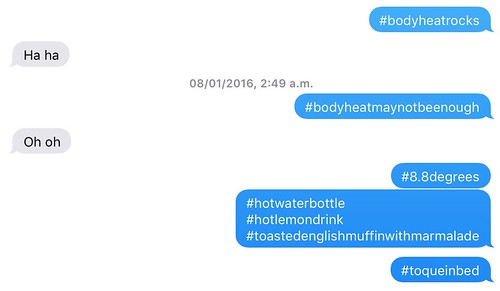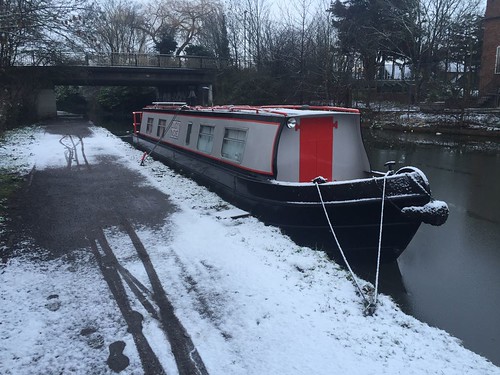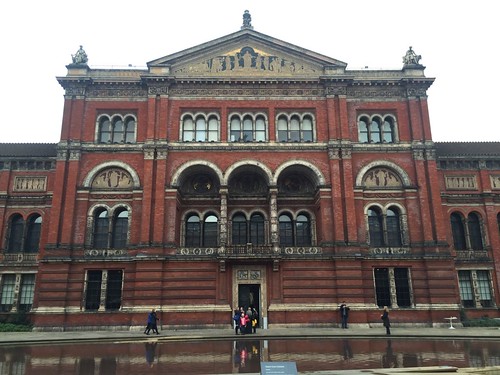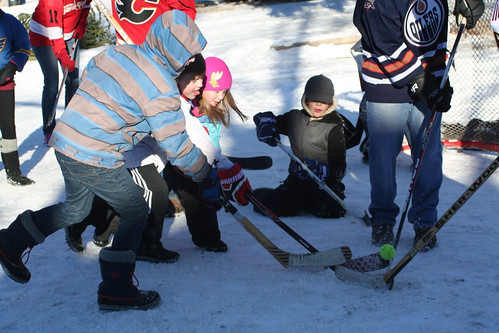Remember back when boat life was all new (actually, it still kind of is) and I talked to you about heating on the boat? Well back then I was firmly of the opinion that the wood / coal burning stove that came with the boat was too much of a pain in the ass to be a viable, full-time, winter-worthy source of heat for the boat. In brief, my concerns were:
1. Coal is hard to light
Actually on point number one I was kinda right, except it turns out that (as was patiently explained by several people with coal fire experience) you really do learn quite quickly how to get the thing going properly. Within about four days of getting back on the boat, I’d pretty much cracked it. In part, I'd been being a bit cheap with the amount of fuel I was using when I set the fire. And I did a bit of Googling (of course) to pick up some tips. So here’s my method:
I've got what's called a "multi-fuel stove", meaning that it can burn wood or coal or a combination thereof. I’ve elected to burn coal exclusively. I’m not interested in faffing around with any of that foraged-on-the-towpath-piled-on-the-roof firewood crap. It might be free but it's messy and bulky and wet. I even buy pre-cut bags of dry kindling, because I’m posh/lazy like that. Oh sure, if I’ve got scrap wood hanging around that’s an appropriate size to fit in the firebox, I’ll chuck it in. But in terms of Heat Output vs. Volume of Storage, coal is king. (Sadly, though, the coal I buy is NOT mined in the UK because the UK’s last working coal mine closed in December. )
I burn processed smokeless coal (as required by local laws) that comes in consistently-shaped blobs that look like giant BBQ briquettes. It comes in 25kg bags, and I can comfortably store six bags outside on the bow deck and still have access to the hatch that reveals the water tank and ample storage space next to the tank below for two 20-litre jerry cans of back-up diesel, 3 extra bags of kindling and a few packs of highly compressed wood logs that are also not bad but burn with more smoke than coal so hence are not great on days when you're driving the boat because then you spend the whole time standing there with smoke blowing in your face.
(Aside: I struggle a bit with figuring out the right verb to use when describing moving the boat. "Driving" feels odd, but it's really not "sailing". "Navigating" is sorta ok, but it implies there's a lot of decision making about which way to go which is totally NOT the case on a canal because you generally have a choice of only two directions, one of which is backwards. Suggestions on more appropriate phraseology welcome.)
Based my experience in January, which had some reasonably cold spells, I’m burning up to about two bags of coal a week. At £14/bag, that’s more than £100/month, but that will decrease steadily as the weather warms. One 25kg bag sits inside the cabin just near the back door so it’s easy to refill the coal scuttle, and that sits next to the stove. (Aside: I’ve got a freakin’ COAL SCUTTLE! And I actually use it every day! How Dickensian is that?!) I use Homefire brand, as recommended by my mate Dave at the boatyard (based on the fact that 90% of the boats who moor there use it) and when I switched to Homefire from the Supertherm I’d been ignorantly buying before, things were noticeably better, especially as regards points three and four, below.
3. Keeping the fire going is a pain
Nope. It’s just not. Unlike wood (especially softwood), coal burns for a long time once it’s going. The kindling (and newspaper, if any) disappear quite quickly and you’re left with a nice red hot pile of coals, as pictured above. These will burn quite happily for hours, requiring you simply to add a half-dozen or so more to the top of the fire as you remember. Every three hours is probably plenty. Dial in the dampers correctly and it's remarkably simple.
4. Coming home to a cold boat is miserable
Well that would indeed be miserable, but it just doesn’t happen. (Full disclosure: Actually it did happen once. And it was miserable. It was a day or two after I'd got back and I didn't have the knack of the coal yet. And I got back late after a Hash run. And it was cold. But because it was late I just went straight to bed, reasoning that body heat would do the job, along with a generous amount of bedding and some socks. A couple of hours later I was awake again, hungry and frozen, and standing at the stove boiling the kettle and toasting an English muffin and filling up the hot water bottle I got for Christmas. As evidenced by this succession of text messages between me and Karen, starting with hubris and ending with me in a toque and sweatpants.)
Anyway... now that I have things figured out it's totally fine. On very cold nights, I add about 12 coals to the fire before going to bed and have been rewarded with a very comfortable temperature the next morning. And by comfortable I mean around 16-20 degrees celsius. Not “relatively comfortable for a giant barely insulated tin can sitting in cold water" but properly, normally first world 21st century comfortable. In fact, I’m confident that this boat is the warmest place I’ve lived in London. Often in the evening if I’m not paying attention and don’t get the dampers set right the temperature can get up past 26 degrees. And the best thing is that in the morning once you knock out the ash and clean out the grate there are still enough hot coals that you can just pile on some more kindling and coal and the heat is enough to light the kindling directly and get it all roaring again. I’ve had the same fire lit for about two weeks now. It’s immensely satisfying.
Oh, and if I’m out during the day the same thing applies. There’s enough warmth left in what’s burning to give it the same kindling + coal treatment when I get home and it’s no big deal.
So yeah, I’m pretty happy with my little stove. It provides a consistent, comfortable dry heat (great for drying laundry!), though there are few small annoying points. First of all 25kg bags of coal are heavy. Not impossibly heavy, but heavy enough that I have to think carefully about how I’m lifting and where I put my feet and such, and I’m no weedy weakling. I can imagine that some people might find it a bit too much. Also you do have to actually go buy the coal. So far I’ve been close enough to different boatyards to get it there, but I’m getting closer to central London now, where there are fewer such locations. Luckily, there are a few independent guys who ply the inland waterways on big barges loaded with coal, gas canisters and other useful supplies, so perhaps the next time I’m running low I’ll flag one down.
And coal is very very dirty. I’ve now dug up a pair of heavy black rubber gloves I use when refilling the coal scuttle (Again: Eeeeeee! Coal scuttle!) but whenever I deal with coal it’s inevitable that I get some kind of stray black smudge somewhere on a knuckle or sleeve or knee. Also, due to coal’s utter blackness, and the blackness of the inside of the coal scuttle (!) it can be a pain in the ass to actually dig around with my little tongs and grasp a particular black lump inside a long black tube. And then there’s the small game of coal Jenga to be played when placing every piece onto a burning fire. The coals are kind of rounded and hence prone to rolling around so I do feel like I spend a fair bit of time balancing coals on top of each other over and over again to get them to stay where they’re put. They also shift around as they burn, meaning that every once in a while you hear a clattering noise that means something has shifted and it’s time for another round of Jenga.
On balance though, these are small and very manageable faults because a red hot coal fire is genuinely lovely thing. It keeps a kettle full of water warm all day long for quick cups of tea or coffee or small amounts of washing up. And makes an excellent plate warmer for your morning egg. And when the rain is pattering on the roof and there's nothing to do but open a book and pour a glass of wine and relax it is not miles away from perfect.
- Coal fires are hard to get lit and burning properly.
- Storing a reasonable amount of fuel on the boat would be difficult.
- Keeping the fire going properly takes too much time and effort.
- It wouldn’t stay lit well enough to ensure a comfortable return home late at night in January, or a comfortable waking the next morning.
1. Coal is hard to light
Actually on point number one I was kinda right, except it turns out that (as was patiently explained by several people with coal fire experience) you really do learn quite quickly how to get the thing going properly. Within about four days of getting back on the boat, I’d pretty much cracked it. In part, I'd been being a bit cheap with the amount of fuel I was using when I set the fire. And I did a bit of Googling (of course) to pick up some tips. So here’s my method:
- Make a single layer of coals on the grate. I use about 8 pieces for this - four across and 2 deep. Don’t cheap out. Position this layer at the back of the firebox. This was a key breakthrough for me - I had been building the fire in the middle of the grate, meaning that there was a tendency for fuel added on the top to fall off the back. Now I shove it all up against the back and it’s fine. Amazing how such a small thing can be such a game-changer.
- Add 4-6 small pieces of that kind of firestarter that looks and smells like white styrofoam soaked in gasoline. (In fact, I suppose it could well be white styrofoam soaked in gasoline. I don’t care. It works.)
- (Somewhat optional) Add several sheets of newspaper twisted into relatively tight bundles.
- Add a generous layer of dry kindling, again keeping to the back of the firebox.
- Add another layer coal - at least 6 pieces.
- Add more dry kindling on top of that.
- Open the dampers all the way.
- Light ‘er up!
Ticking over!
2. Fuel for the stove is a pain to storeI've got what's called a "multi-fuel stove", meaning that it can burn wood or coal or a combination thereof. I’ve elected to burn coal exclusively. I’m not interested in faffing around with any of that foraged-on-the-towpath-piled-on-the-roof firewood crap. It might be free but it's messy and bulky and wet. I even buy pre-cut bags of dry kindling, because I’m posh/lazy like that. Oh sure, if I’ve got scrap wood hanging around that’s an appropriate size to fit in the firebox, I’ll chuck it in. But in terms of Heat Output vs. Volume of Storage, coal is king. (Sadly, though, the coal I buy is NOT mined in the UK because the UK’s last working coal mine closed in December. )
I burn processed smokeless coal (as required by local laws) that comes in consistently-shaped blobs that look like giant BBQ briquettes. It comes in 25kg bags, and I can comfortably store six bags outside on the bow deck and still have access to the hatch that reveals the water tank and ample storage space next to the tank below for two 20-litre jerry cans of back-up diesel, 3 extra bags of kindling and a few packs of highly compressed wood logs that are also not bad but burn with more smoke than coal so hence are not great on days when you're driving the boat because then you spend the whole time standing there with smoke blowing in your face.
(Aside: I struggle a bit with figuring out the right verb to use when describing moving the boat. "Driving" feels odd, but it's really not "sailing". "Navigating" is sorta ok, but it implies there's a lot of decision making about which way to go which is totally NOT the case on a canal because you generally have a choice of only two directions, one of which is backwards. Suggestions on more appropriate phraseology welcome.)
Six bags of coal, tidily stowed. Normally it's even covered up by a couple of discreet black bin liners held in place by the magic of magnets! The water tank is under that centre cover.
Pic of stove open and ready to be rekindled (Oooh... I actually was LITERALLY re-kindling! Words are fun!). The kettle can be glimpsed on top of the stove, with the door handle and pile of kindling on the floor. The black box is my ashcan (repurposed metal bread bin) and in the back you can see the full coal scuttle with tongs hanging from it.
3. Keeping the fire going is a pain
Nope. It’s just not. Unlike wood (especially softwood), coal burns for a long time once it’s going. The kindling (and newspaper, if any) disappear quite quickly and you’re left with a nice red hot pile of coals, as pictured above. These will burn quite happily for hours, requiring you simply to add a half-dozen or so more to the top of the fire as you remember. Every three hours is probably plenty. Dial in the dampers correctly and it's remarkably simple.
4. Coming home to a cold boat is miserable
Well that would indeed be miserable, but it just doesn’t happen. (Full disclosure: Actually it did happen once. And it was miserable. It was a day or two after I'd got back and I didn't have the knack of the coal yet. And I got back late after a Hash run. And it was cold. But because it was late I just went straight to bed, reasoning that body heat would do the job, along with a generous amount of bedding and some socks. A couple of hours later I was awake again, hungry and frozen, and standing at the stove boiling the kettle and toasting an English muffin and filling up the hot water bottle I got for Christmas. As evidenced by this succession of text messages between me and Karen, starting with hubris and ending with me in a toque and sweatpants.)
At least I can admit when I'm wrong. And Wendy: THANK YOU FOR THE HOT WATER BOTTLE.
#hotwaterbottlesrock
Anyway... now that I have things figured out it's totally fine. On very cold nights, I add about 12 coals to the fire before going to bed and have been rewarded with a very comfortable temperature the next morning. And by comfortable I mean around 16-20 degrees celsius. Not “relatively comfortable for a giant barely insulated tin can sitting in cold water" but properly, normally first world 21st century comfortable. In fact, I’m confident that this boat is the warmest place I’ve lived in London. Often in the evening if I’m not paying attention and don’t get the dampers set right the temperature can get up past 26 degrees. And the best thing is that in the morning once you knock out the ash and clean out the grate there are still enough hot coals that you can just pile on some more kindling and coal and the heat is enough to light the kindling directly and get it all roaring again. I’ve had the same fire lit for about two weeks now. It’s immensely satisfying.
Oh, and if I’m out during the day the same thing applies. There’s enough warmth left in what’s burning to give it the same kindling + coal treatment when I get home and it’s no big deal.
So yeah, I’m pretty happy with my little stove. It provides a consistent, comfortable dry heat (great for drying laundry!), though there are few small annoying points. First of all 25kg bags of coal are heavy. Not impossibly heavy, but heavy enough that I have to think carefully about how I’m lifting and where I put my feet and such, and I’m no weedy weakling. I can imagine that some people might find it a bit too much. Also you do have to actually go buy the coal. So far I’ve been close enough to different boatyards to get it there, but I’m getting closer to central London now, where there are fewer such locations. Luckily, there are a few independent guys who ply the inland waterways on big barges loaded with coal, gas canisters and other useful supplies, so perhaps the next time I’m running low I’ll flag one down.
And coal is very very dirty. I’ve now dug up a pair of heavy black rubber gloves I use when refilling the coal scuttle (Again: Eeeeeee! Coal scuttle!) but whenever I deal with coal it’s inevitable that I get some kind of stray black smudge somewhere on a knuckle or sleeve or knee. Also, due to coal’s utter blackness, and the blackness of the inside of the coal scuttle (!) it can be a pain in the ass to actually dig around with my little tongs and grasp a particular black lump inside a long black tube. And then there’s the small game of coal Jenga to be played when placing every piece onto a burning fire. The coals are kind of rounded and hence prone to rolling around so I do feel like I spend a fair bit of time balancing coals on top of each other over and over again to get them to stay where they’re put. They also shift around as they burn, meaning that every once in a while you hear a clattering noise that means something has shifted and it’s time for another round of Jenga.
On balance though, these are small and very manageable faults because a red hot coal fire is genuinely lovely thing. It keeps a kettle full of water warm all day long for quick cups of tea or coffee or small amounts of washing up. And makes an excellent plate warmer for your morning egg. And when the rain is pattering on the roof and there's nothing to do but open a book and pour a glass of wine and relax it is not miles away from perfect.

























